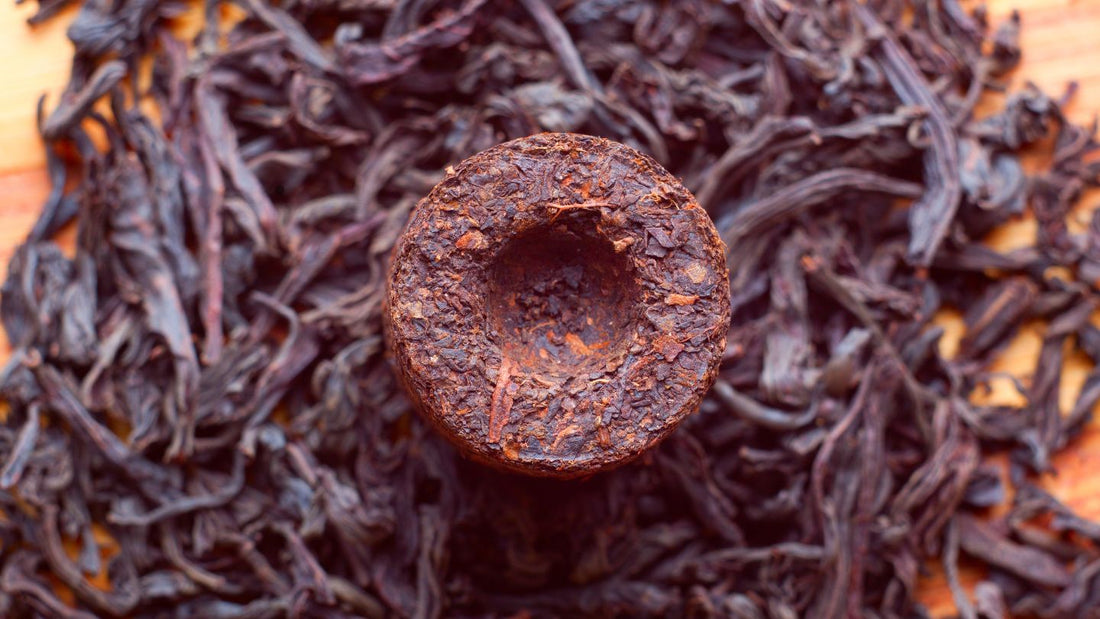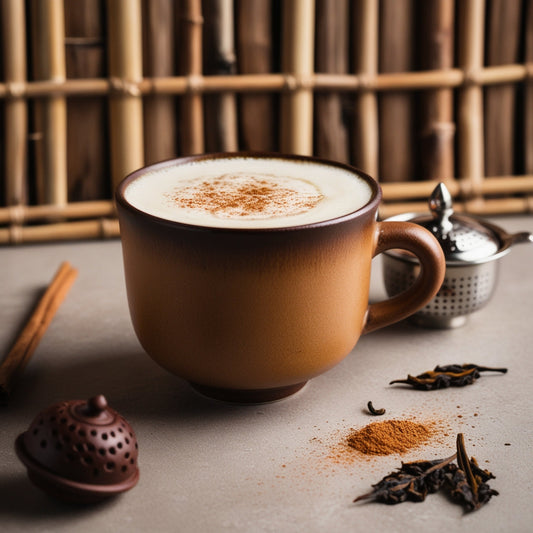Overview
Have you ever heard the loose leaf teas are the best teas to have?
Loose leaf tea, especially Pu-erh tea, offers a unique experience for tea lovers. This article explores the many benefits of loose leaf tea, how to source and store it, and its environmental impact. If you're looking to enhance your tea-drinking experience, this guide is for you.
Table of Content
- Introduction
- The Benefits of Having Loose Leaf Tea
- How to Source Authentic Loose Leaf Tea
- How to Store Loose Leaf Tea
- How to Quality Check Loose Leaf Tea
- The Benefit to Environment
- Conclusion
Introduction
Loose leaf tea consists of whole tea leaves that are not confined in a bag. This allows the leaves to expand fully when brewed, releasing their full flavor and aroma. Pu-erh tea, a type of loose leaf tea, has been cherished for centuries for its rich flavor and numerous health benefits. Unlike tea bags, which often contain broken leaves, dust, and fannings, loose leaf tea offers a fresher and more authentic experience.
In this article, we will uncover the truth about loose leaf tea and why you should consider making the switch.
The Benefits of Having Loose Leaf Tea
Loose leaf tea, particularly Pu-erh tea, offers several advantages over tea bags.
Firstly, loose leaf tea provides a richer and more complex flavor. The larger leaves retain more essential oils, which enhance the taste. When you brew loose leaf tea, the leaves have more room to expand and release their full flavor potential. This results in a more satisfying and aromatic cup of tea.
In addition to the superior flavor, Pu-erh tea is known for its health benefits. It aids in digestion, boosts metabolism, and helps reduce cholesterol levels. According to a study published in the Journal of Agricultural and Food Chemistry, Pu-erh tea contains antioxidants that can help protect against heart disease. These antioxidants help neutralize harmful free radicals in the body, reducing the risk of chronic diseases and promoting overall health.
Furthermore, loose leaf tea is generally fresher than tea bags. The leaves are less processed, which helps preserve their natural flavors and nutrients. Tea bags often contain broken leaves, dust, and fannings, which can result in a stale and less flavorful cup of tea. Loose leaf tea, on the other hand, is made from whole leaves, ensuring a fresher and more vibrant tea-drinking experience.
Another advantage of loose leaf tea is the ability to customize your tea. You can control the strength and flavor by adjusting the amount of loose leaves you use. This allows for a more personalized tea-drinking experience. Whether you prefer a light and delicate brew or a strong and robust cup, loose leaf tea gives you the flexibility to tailor your tea to your taste.

How to Source Authentic Loose Leaf Tea
Finding authentic Pu-erh tea can be a rewarding experience if you know where to look:
- Specialty Tea Shops: Visit specialty tea shops that focus on high-quality, authentic teas. These shops often source their tea directly from reputable producers.
- Online Retailers: Many online retailers specialize in loose leaf tea. Look for retailers with good reviews and a strong reputation for quality.
- Farmers' Markets: Local farmers markets can be a great place to find fresh and authentic loose leaf tea. Talk to the vendors about the origin and production methods of their tea.
How to Store Loose Leaf Tea
Proper storage is crucial to maintain the freshness and flavor of loose leaf tea. Airtight containers are essential for protecting tea from moisture and air. Glass jars with rubber seals or metal tins work well for storing loose leaf tea. Make sure the containers are clean and dry before transferring the tea to prevent any contamination.
Keep your tea in a cool, dark place, away from direct sunlight and heat sources. Exposure to light and heat can degrade the quality of the tea, causing it to lose its flavor and aroma. A pantry or cupboard away from the stove and other heat sources is an ideal storage location for loose leaf tea.
It's also important to avoid storing tea near strong odors. Tea can absorb odors from its surroundings, which can affect its flavor. Store tea away from spices, coffee, and other strong-smelling items to preserve its natural aroma and taste.
How to Quality Check Loose Leaf Tea
To ensure you're getting the best Pu-erh tea, it's important to know how to quality check your loose leaf tea.
Here are three key aspects to consider: visual inspection, aroma, and taste test.
Visual Inspection: High-quality loose leaf tea should have whole, unbroken leaves. The leaves should be large and intact, without any signs of damage or crumbling. The color of the leaves should be consistent and vibrant, indicating that the tea is fresh and well-processed. For Pu-erh tea, the leaves may have a dark, reddish-brown hue, reflecting the fermentation process. Avoid tea that has an uneven color or contains a lot of dust and broken leaves, as this can indicate lower quality.
Aroma: They should have a fresh, fragrant aroma. The scent of Pu-erh tea can be earthy and slightly sweet, with a complex bouquet that reflects its unique fermentation process. Avoid tea that smells stale or musty, as this can be a sign of poor quality or improper storage. A strong, unpleasant odor can also indicate that the tea has absorbed moisture or foreign odors, which can negatively affect its flavor.
Taste Test: Brew a small amount of tea and taste it. The flavor should be rich and complex, without any bitterness. Pu-erh tea is known for its smooth and mellow taste, with earthy and slightly sweet notes. Each sip should be balanced and pleasant, with a lingering aftertaste that reflects the tea's quality. If the tea tastes flat, bitter, or lacks depth, it may be of lower quality or past its prime. By paying attention to the visual, aroma, and taste aspects, you can ensure that you're getting the best possible Pu-erh tea.

The Benefit to Environment
Loose leaf tea is not only good for you but also for the environment:
- Less Packaging Waste: Loose leaf tea uses less packaging than tea bags, reducing waste and environmental impact. Most tea bags are made with plastic, which can take hundreds of years to decompose.
- Compostable Leaves: After brewing, loose tea leaves can be composted, providing nutrients to the soil and reducing landfill waste.
- Sustainable Practices: Many loose leaf tea producers practice sustainable farming methods, which help protect the environment and ensure the long-term health of tea plantations.
Conclusion
Switching to loose leaf tea, especially Pu-erh tea, can significantly enhance your tea-drinking experience. It offers richer flavors, numerous health benefits, and a lower environmental impact compared to tea bags. By sourcing high-quality tea, storing it properly, and knowing how to check its quality, you can enjoy a fresher and more satisfying cup. Make the switch today and discover the true essence of loose leaf tea.
Explore our selection of high-quality Pu-erh teas and elevate your tea experience. Visit our online store now and taste the difference for yourself.
Q&A Section
Q1: What is the difference between Pu-erh tea and other loose leaf teas?
A1: Pu-erh tea is unique because it undergoes a fermentation process, which gives it a distinct earthy flavor and additional health benefits. Other loose leaf teas, like green or black tea, do not undergo this process.
Q2: How long does loose leaf tea last?
A2: If stored properly in an airtight container and kept in a cool, dark place, loose leaf tea can last for several years. However, it's best to consume it within a year for the freshest flavor.
Q3: Can I reuse loose leaf tea leaves?
A3: Yes, you can reuse loose leaf tea leaves for multiple infusions. Each infusion will have a slightly different flavor, and Pu-erh tea is known for improving with each subsequent brew.
Q4: Is loose leaf tea more expensive than tea bags?
A4: While loose leaf tea may have a higher upfront cost, it often provides better value. The quality and flavor are superior, and you can reuse the leaves multiple times, making it more economical in the long run.






